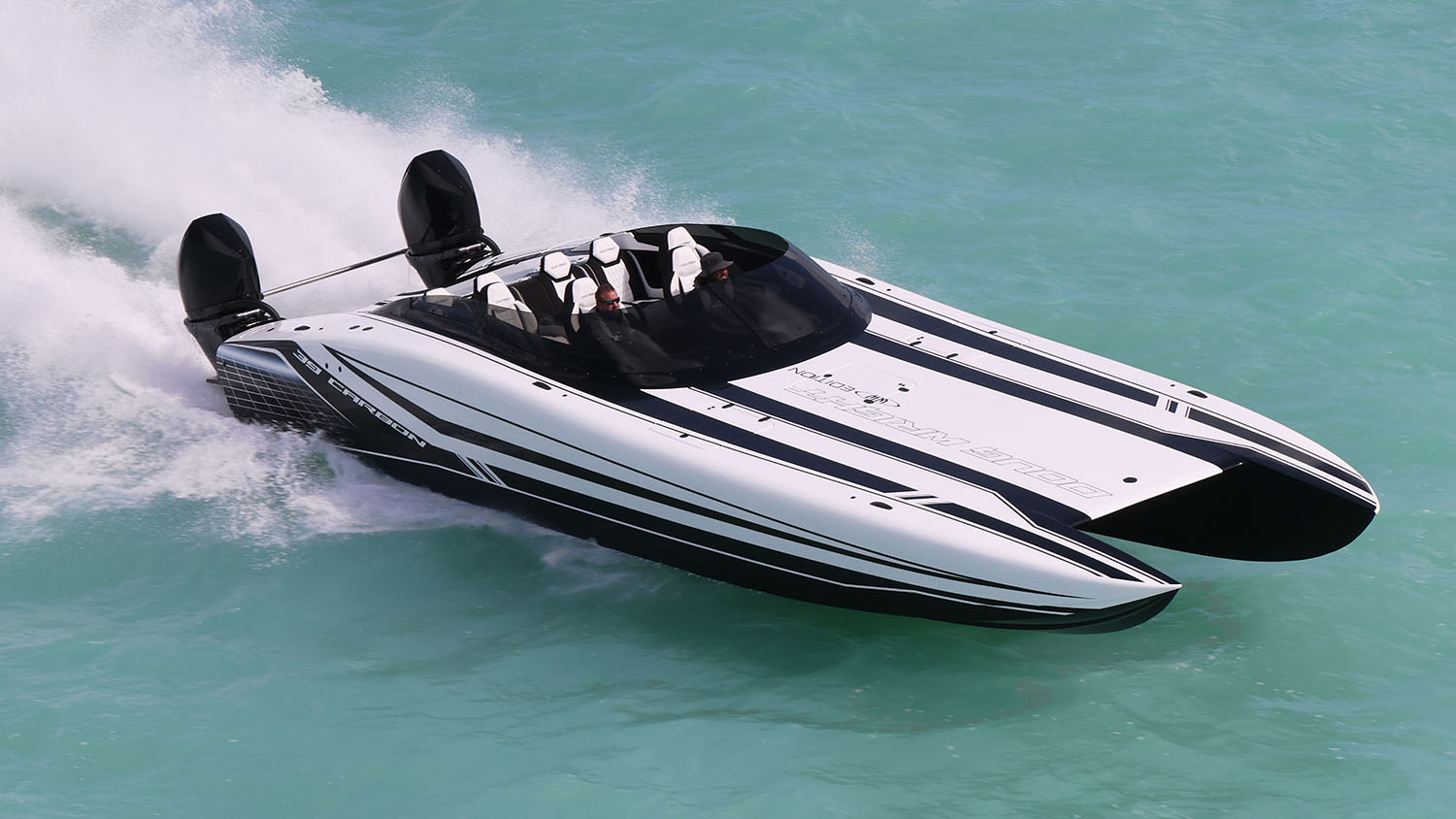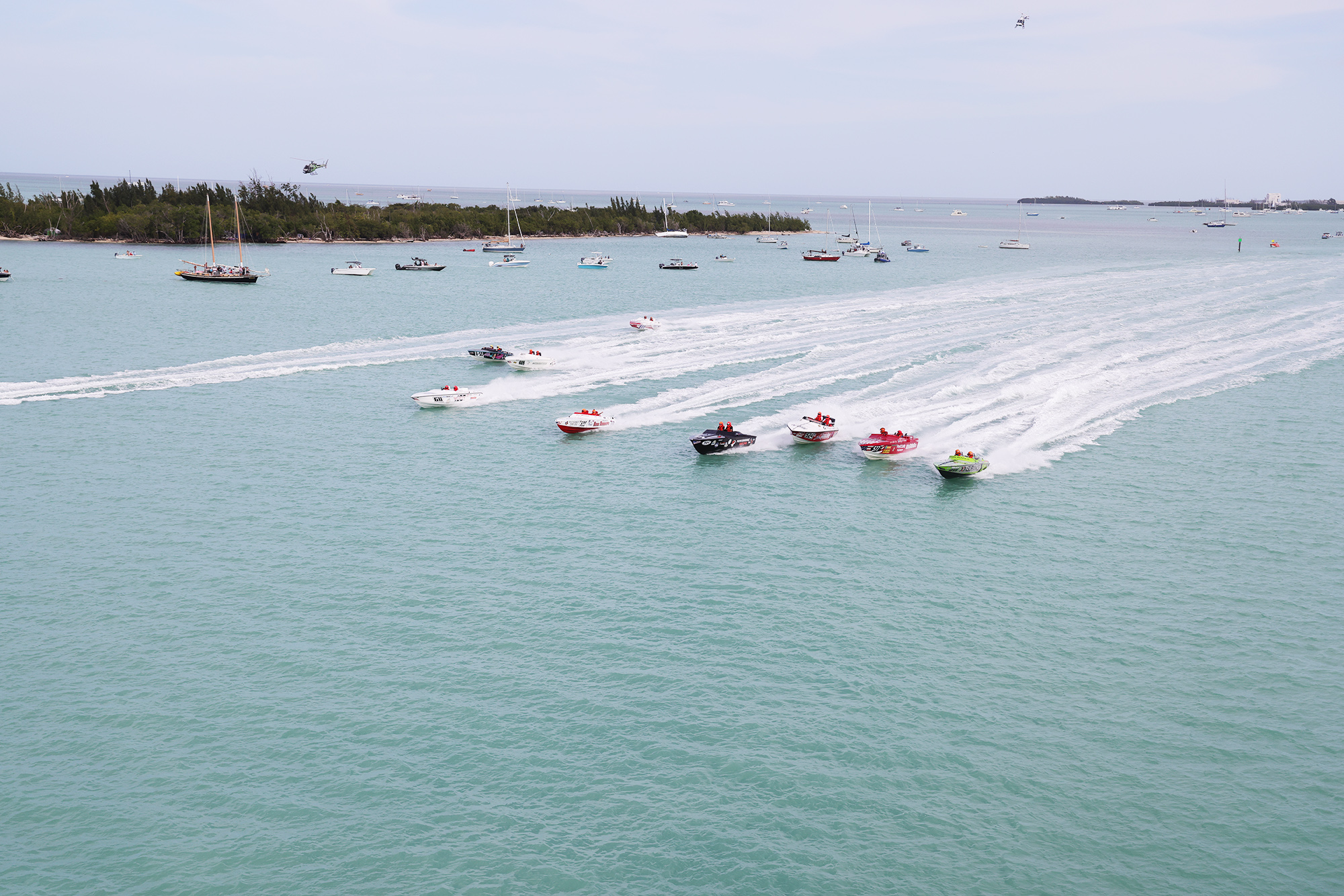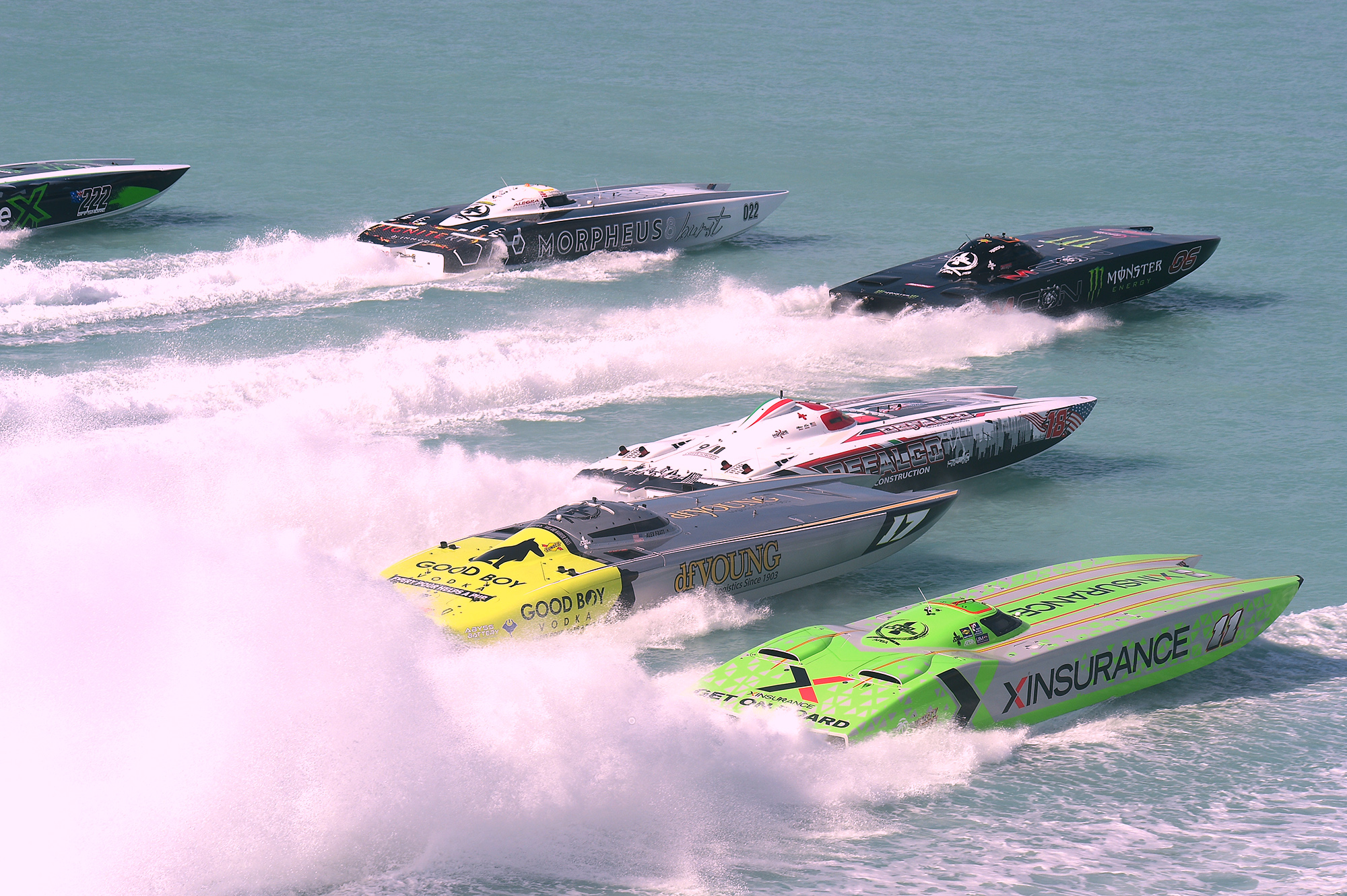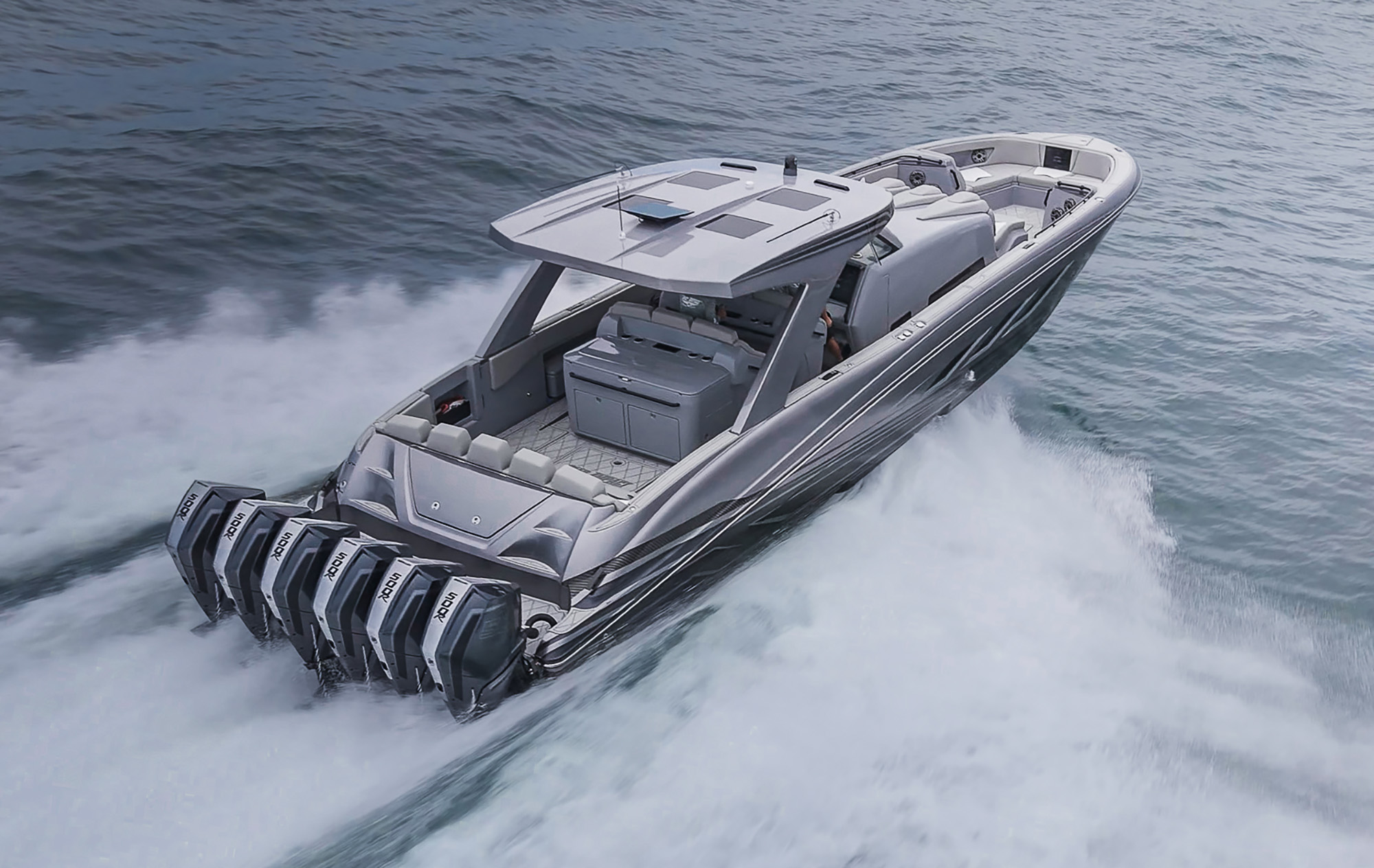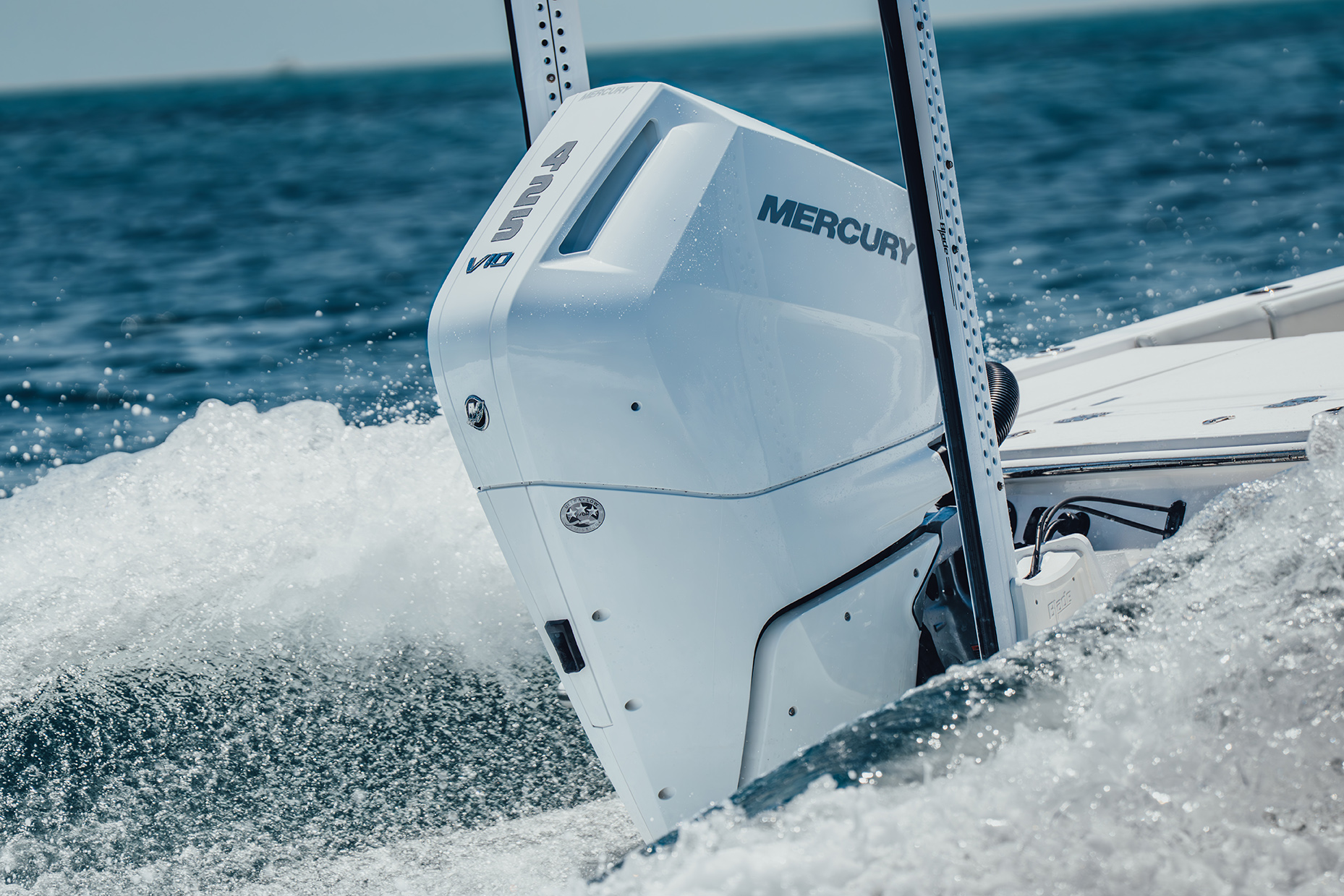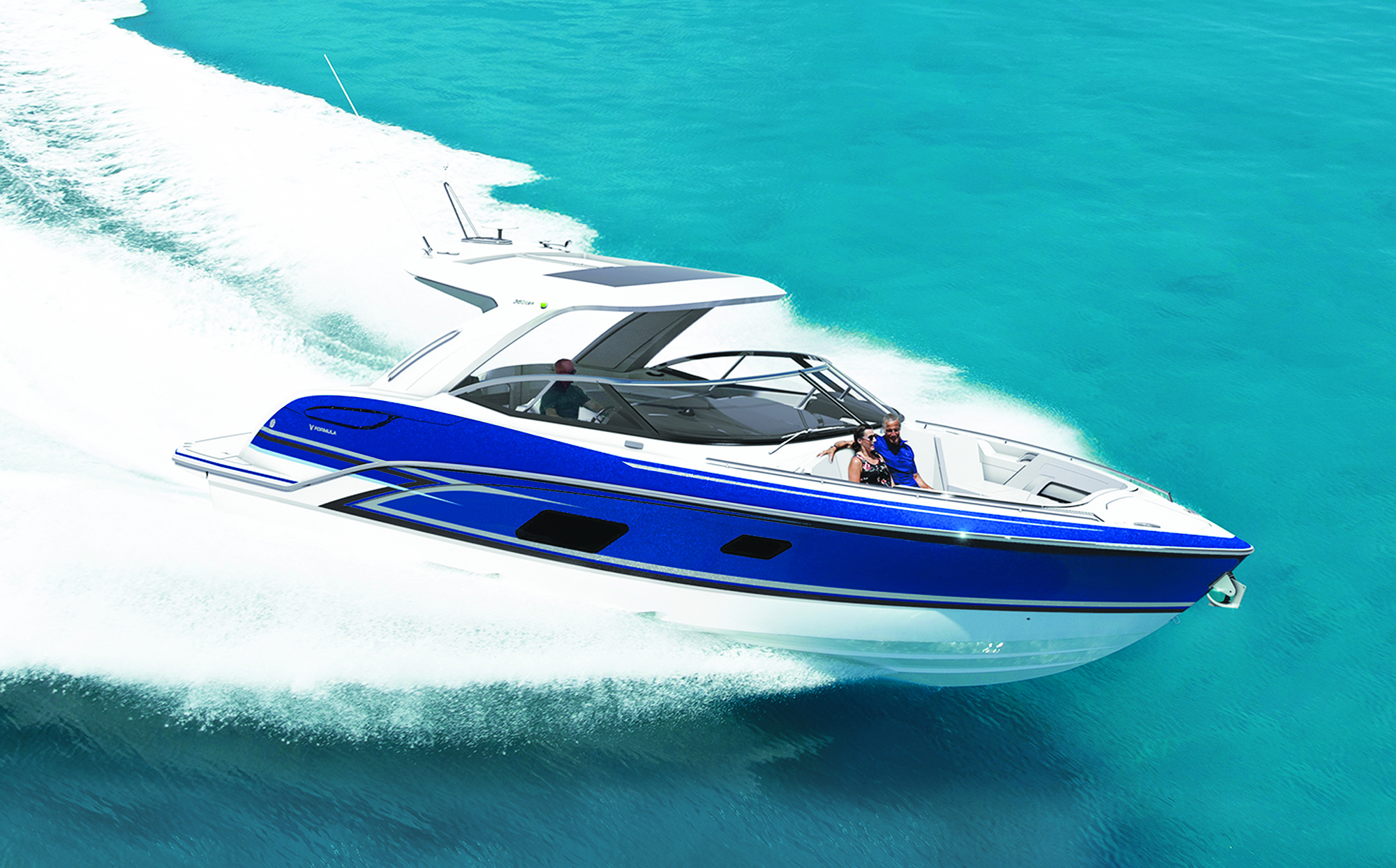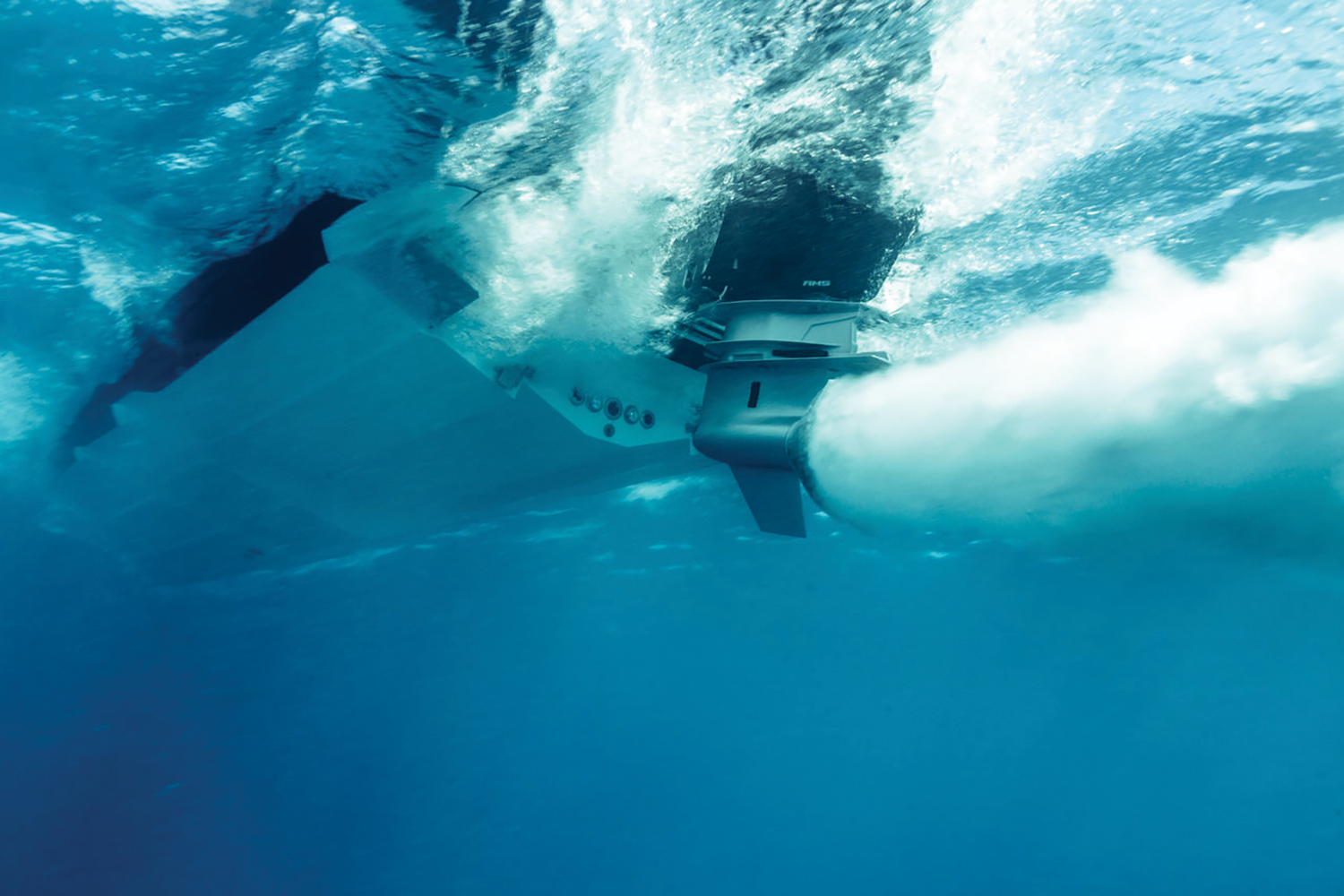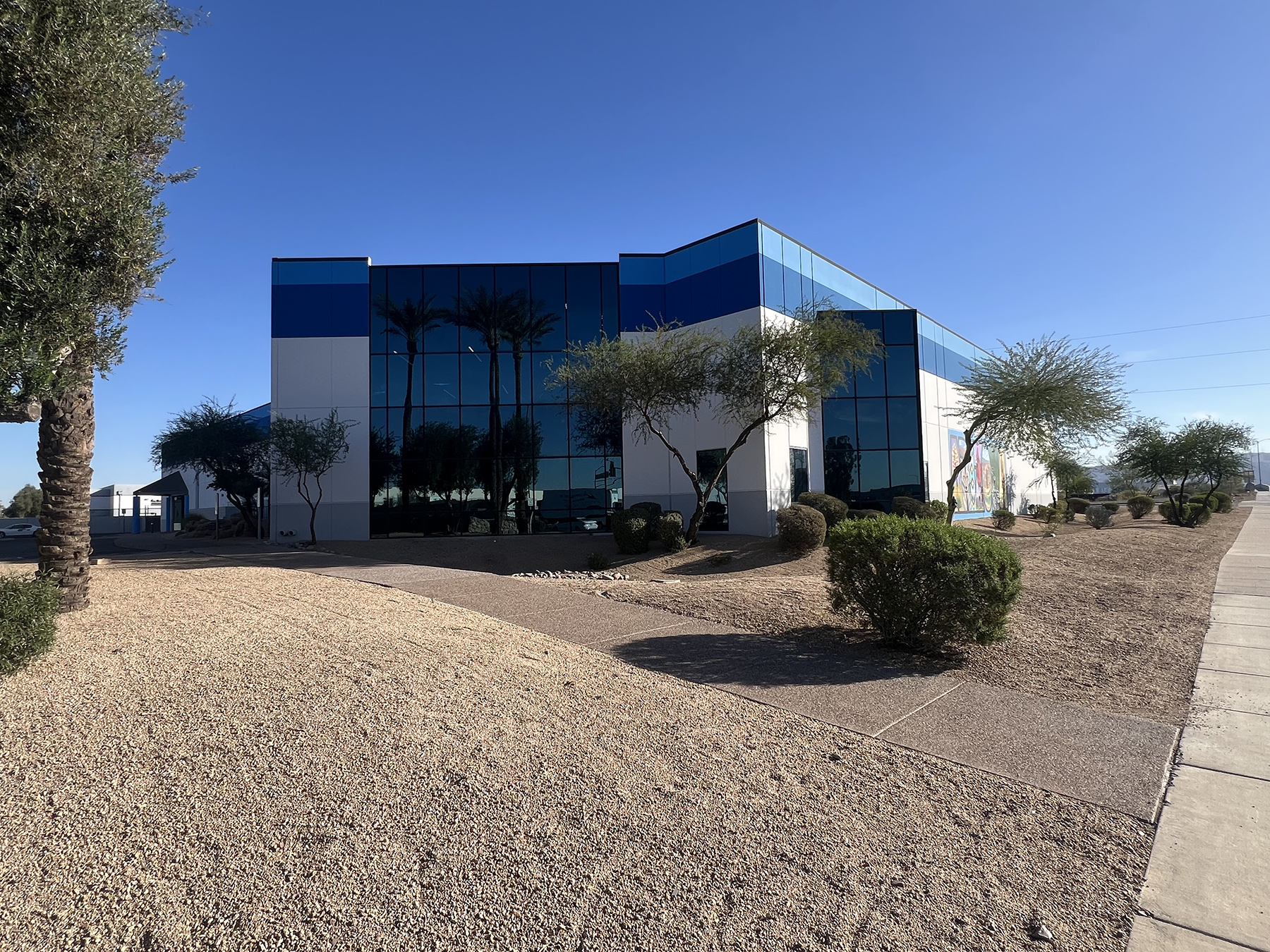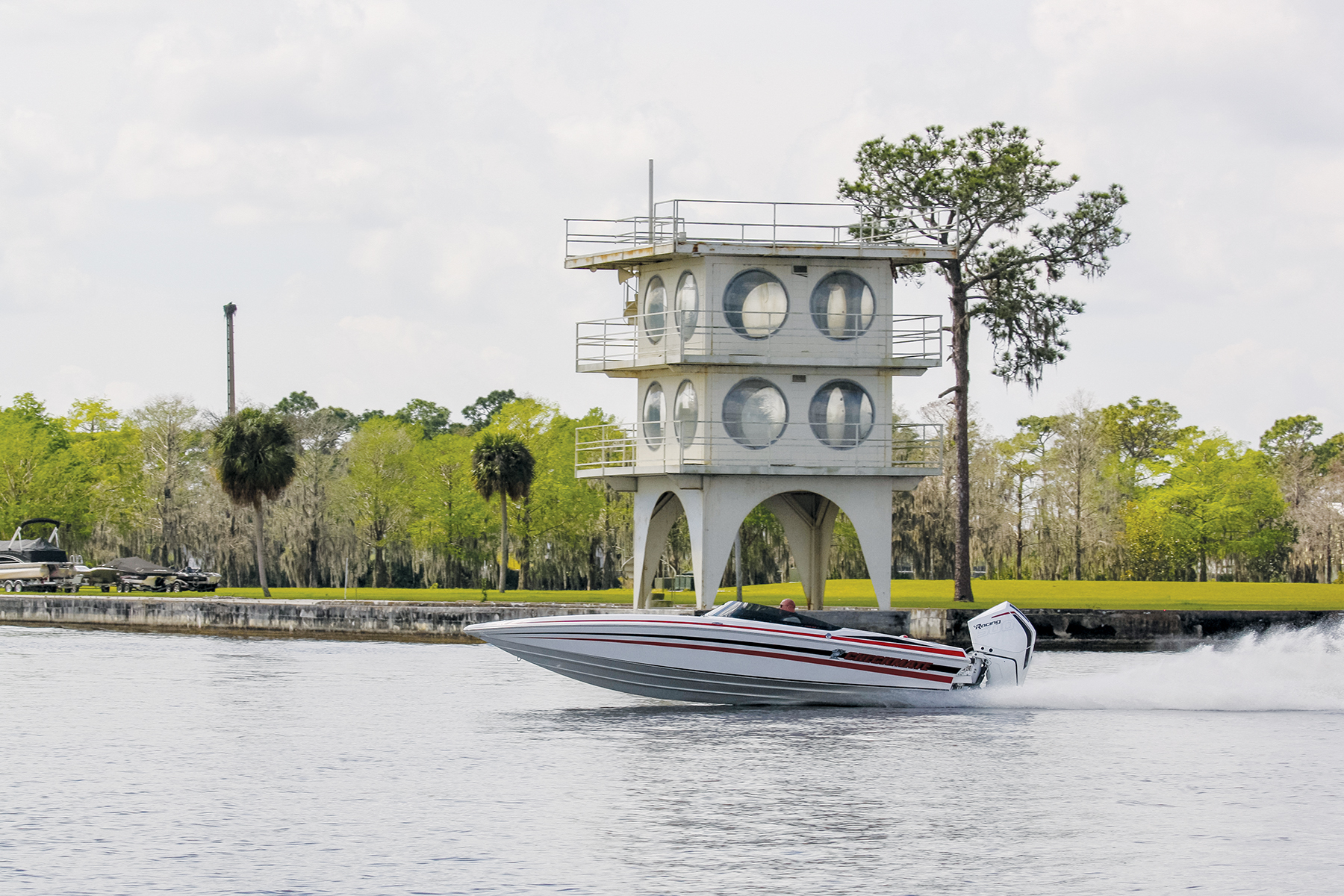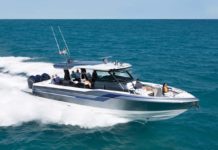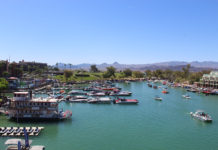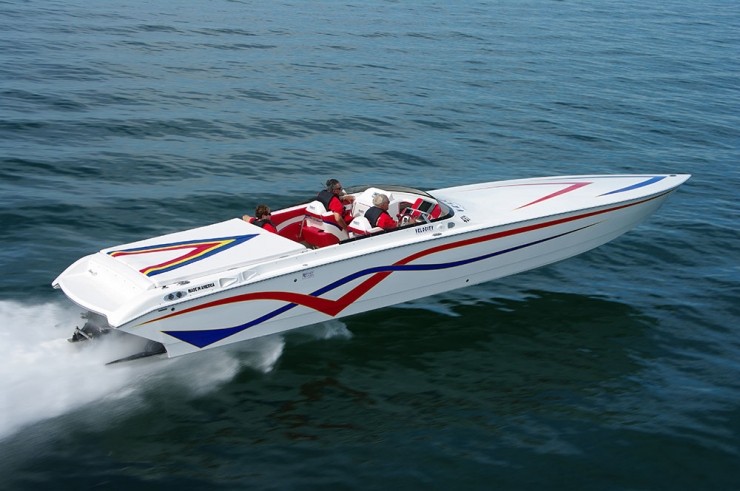
Steve Stepp and his company Velocity Powerboats are known to squeeze every ounce of power of out an engine and transfer that force to the water.
Based in Sanford, Florida, Velocity Powerboats’ history spans more for than four decades. Following Stepp’s successful racing career in the early 1960’s, he relayed his racing experience to the boating industry and developed the “Stepp Transom and Pad Bottom” in the late 70’s. Following its launch, it was one of the greatest concepts in offshore boat designs since the introduction of the deep-V hull. The bottom was 10 to 15 mph faster than its competitors and in the early 1980’s, Stepp partnered with Gene Whipp and officially broke the 100 mph mark in the APBA-sanctioned Kilo races, piloting a 30-foot Velocity.
Following several accomplishments in the last two decades, the company is once again near hitting the magic 100 mph mark – this time with its 2013 390 SS and twin Mercury Racing 565 Sterndrive engines.
This past June, loyal Velocity boat owner Ed Nichols commissioned a new 390 SS. He was looking for speed, but also fuel efficiency in a light package. The engines mated to the efficient 390 has the potential of being one of the fastest and most economical high performance Vee bottoms on the market. I caught up with Velocity general manager, Kenny Hohwiesner, at Poker Runs America’s Season Finale Poker Run this past October in Tampa where the 390 made its debut.
At rest, users will appreciate the functionality of the cabin with its spacious V-berth, more than six feet of headroom, and opposing bench seats. A lift out cooler was secured in place, while a fresh water sink and ample storage is also featured.
Back in the cockpit, Stepp mentioned the helm is “simple” and they eliminated traditional round gauges, wood and cables. However, the utmost functionality is provided by the Garmin 4210 display and it relays just about any function you could want for cruising. What’s more is the pair of SmartCraft RaceView screens on both sides of the wheel. Livorsi DTS shift/throttle controls enhance the color-matched helm.
Opening the engine hatches expose the staggered engine set up. I immediately noticed the two 40-gallon fuel tanks and after questioning Kenny on this, there are two additional 60-gallon tanks under the cockpit floor. All tanks are monitored on the SmartCraft system to optimize fuel burn and performance. Rigging is immaculate. The engines are mounted solid through the Coosa Board stringers and the transom is also constructed of Coosa Board to eliminate any chance of water intrusion. The 390 doesn’t contain any wood and incorporates Divinicell and Nida core. Stepp and Hohwiesner were a bit tight-lipped when it came to laminates and core schedules, but Velocity uses vinylester resins, Kevlar hybrids and carbon fiber. The 565 Sterndrives are naturally-aspirated and combine the performance of big block power with the latest (DTS) digital throttle and shift components. The Mercury 565 is based on the same block as the race proven 525 EFI and they adjusted the stroke for more power and torque. The result was an additional 31 cubic inches of displacement (533-CID). The larger displacement combined with redesigned cylinder heads, the multiport fuel injection system and twin throttle bodies deliver a solid 565 hp at 5400 rpm. The engines, as well as onboard systems on this 390 are charged by a set of the optional Odyssey batteries from Reading, PA.
The 565 features the same Propulsion Control Module (PCM) microprocessor as the Mercury Racing QC4v 1100 and 1350 with eight individual coils (one per cylinder) that optimize spark and fuel burn (while enhancing engine performance economy and durability).
At the beginning of our sea trials, I turned the keys and the 565’s came to life. Mercury Racing’s X-haust, a fully integrated sterndrive exhaust noise reduction system, was concealed under the swim platform and had the recognizable sound of power. I pushed the shifter into gear and immediately noticed the DTS system. There wasn’t the common “thunk” commonly associated with the Bravo drives. It was smooth as silk.
The wind was blowing 15 to 20 knots and I pushed the throttles forward and the boat came on plane with no loss of the horizon. The windscreen deflected the quickening air over my head and away from my ears. At 2500 rpm we were running 32 mph and at 3500 rpm at we were running 50 mph. At 4500 rpm we jumped to an impressive 72 mph. As the bay was producing a solid confused chop, I started making S turns at speed and the boat tracked perfectly. The harder and harder I turned the 390, it never showed any signs of slipping. She handled with precision, even when crossing a huge tanker’s wake. At wide open throttle, we were on the limiters hard with plenty of throttle left when we hit 92.5 mph.
Hohwiesner explained that during the preliminary testing of the 390, it produced 92.5 mph. This was achieved with Bravo Sport Master drives with a 1.5 gear ratio and Mercury Maximus 32-inch props. But with an overall objective to hit the magic 100 mph mark, Stepp and Hohwiesner tested the 390 once again with a set of Mercury 5-blade Maximus 34-inch pitch props and achieved an impressive speed of 96.5 mph, then 99.8 mph. When this issue went to press, the company was currently waiting on a new series of props from Mercury and following delivery, Stepp is confident the 390 will hit easily 100 mph. With their expertise and focus, I believe they will achieve it. PRA



